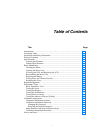
80 Series V
Calibration Manual
2
XWWarning
To avoid possible electric shock or personal injury, inspect the
test leads for damaged insulation or exposed metal. Check the
test leads for continuity. Replace damaged test leads before
using the Meter.
Precautions and Safety Information
In this manual, a Warning identifies conditions and actions that pose hazard(s) to the
user; a Caution identifies conditions and actions that may damage the Meter or the test
instruments.
XWWarning
To avoid possible electric shock or personal injury, follow these
guidelines:
• Use this Meter only as specified in this manual or the
protection provided by the Meter might be impaired.
• Do not use the Meter if it is damaged. Before using the
Meter, inspect the case. Look for cracks or missing plastic.
Pay particular attention to the insulation surrounding the
connectors.
• Make sure the battery door is closed and latched before
operating the Meter.
• Replace the battery as soon as the battery indicator (M)
appears.
• Remove test leads from the Meter before opening the
battery door.
• Inspect the test leads for damaged insulation or exposed
metal. Check the test leads for continuity. Replace damaged
test leads before using the Meter.
• Do not apply more than the rated voltage, as marked on the
Meter, between the terminals or between any terminal and
earth ground.
• Never operate the Meter with the cover removed or the case
open.
• Use caution when working with voltages above 30 V ac rms,
42 V ac peak, or 60 V dc. These voltages pose a shock
hazard.
• Use only the replacement fuses specified in this manual.
• Use the proper terminals, function, and range for
measurements.
• Avoid working alone.
• When measuring current, turn off circuit power before
connecting the Meter in the circuit. Remember to place the
Meter in series with the circuit.


















